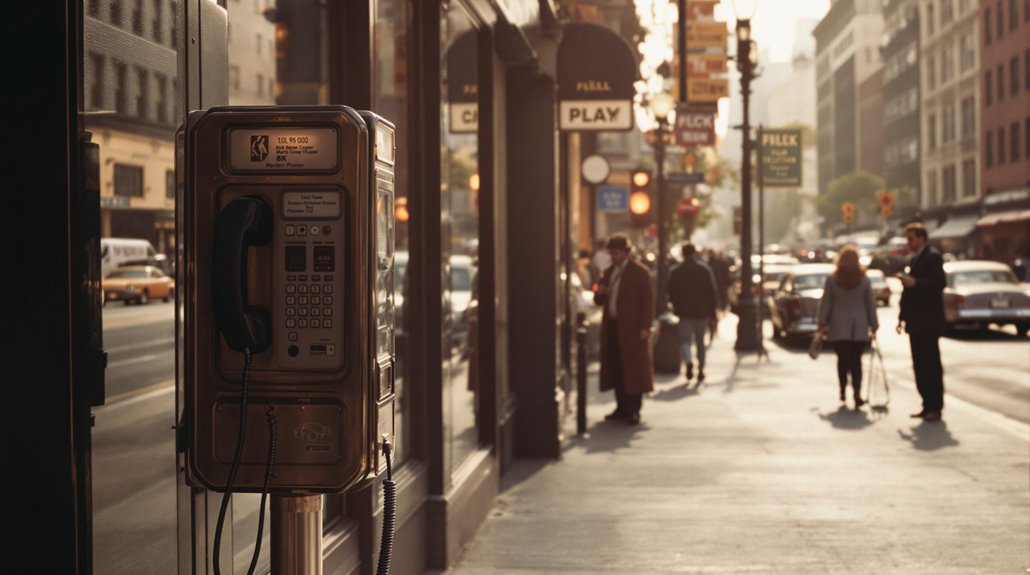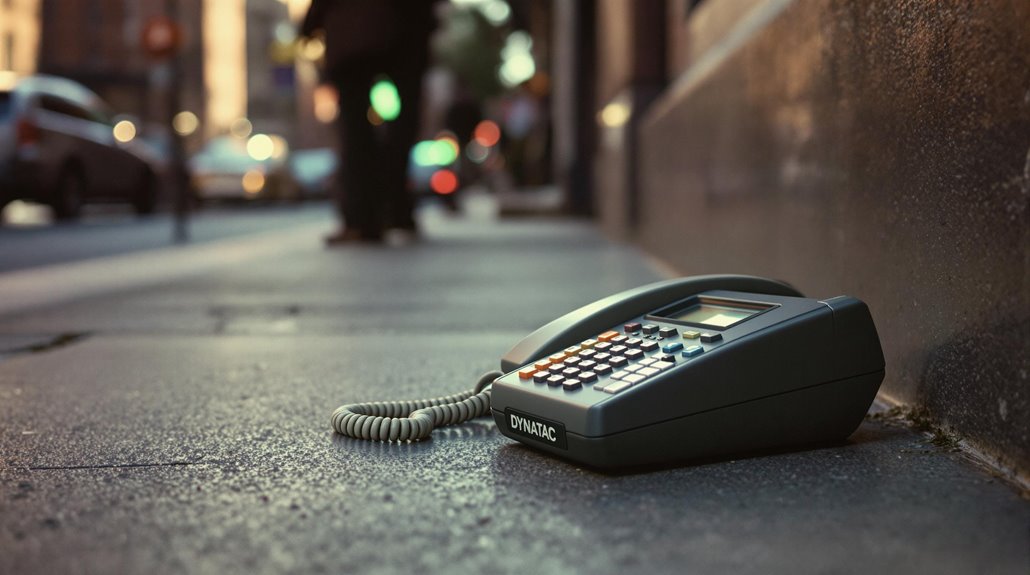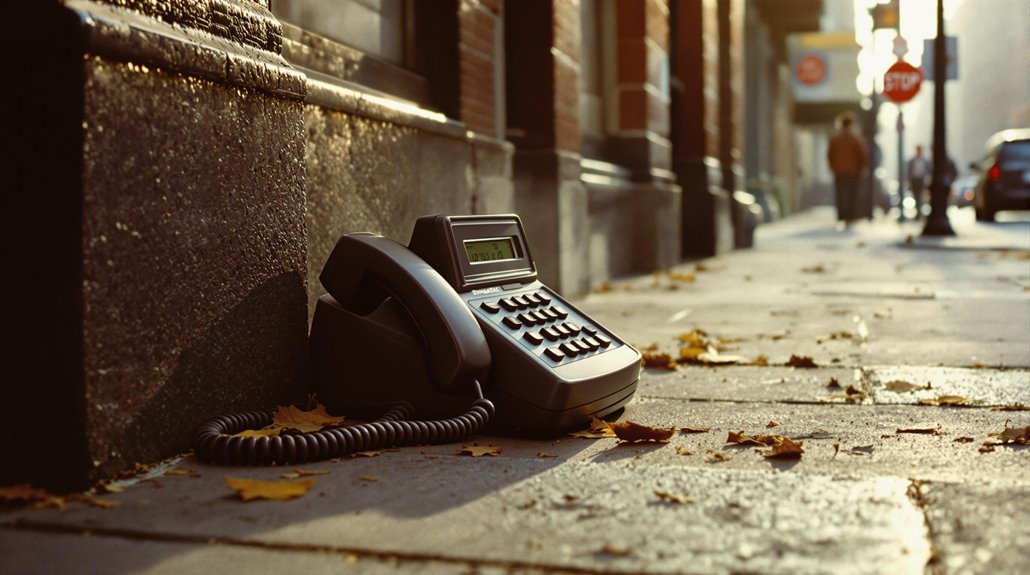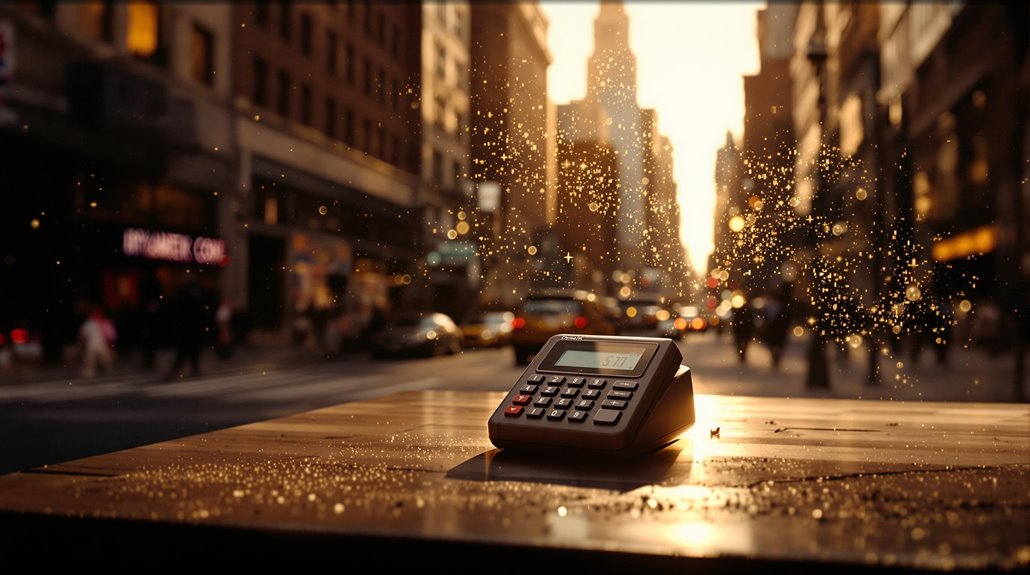Deafness Be Damned: How Martin Cooper’s Handheld Phone Freed Voices Everywhere
Picture a world where silence dominates every conversation, where physical distance creates insurmountable barriers for millions. You might take for granted how easily you can shoot a quick text or make a video call to connect with loved ones today. But before Martin Cooper's revolutionary DynaTAC arrived in 1973, countless voices remained trapped in isolation, particularly those in the deaf community. What you're about to discover isn't just a story about inventing the first mobile phone—it's about breaking free from the prison of silence.
The Silent World Before Cooper's Breakthrough

Before Martin Cooper revolutionized personal communication, people relied on a fascinating array of methods to bridge long distances.
You'd have seen smoke signals dancing across mountain peaks and semaphore flags waving between distant posts. When you needed to send a message, you might've dispatched a carrier pigeon with your carefully penned note.
Scientists advanced communication when Benjamin Franklin's bells proved electrical charges could create sound-based messaging systems in the late 1700s.
The telegraph transformed these silent communication methods in 1832, bringing lightning-fast messaging to your fingertips through Morse's dots and dashes.
Yet early telegraph challenges persisted – you'd need physical wires stretching between stations, and Western Union's dominance made innovation difficult. These early communication systems often excluded disabled individuals, as they weren't designed with accessibility in mind.
Even Bell's telephone, revolutionary as it was, initially struggled to gain acceptance. While some inventors attempted wireless telephony, particularly on trains, these experiments remained limited and impractical for everyday use.
From Comic Books to Reality: The Birth of DynaTAC
The birth of the modern mobile phone began in an unlikely place – the pages of comic books.
Martin Cooper's comic inspiration came from Dick Tracy's two-way wristwatch, while Star Trek's communicators further fueled his vision for portable communication. He believed phones should follow people, not places, and set out to revolutionize how we connect. Cooper and his engineering team worked tirelessly to develop five different prototypes before finalizing their design.
With Motorola's $100 million backing, Cooper led his team to create the DynaTAC 8000x, turning science fiction into reality. The phone needed ten hours to charge, making it a time-consuming device to maintain.
You might recognize it by its nicknames:
** "The Brick" – weighing a hefty 2.5 pounds
** "The Shoe" – stretching 10 inches long
– A $4,000 device that offered 30 minutes of talk time
From prototype to market, it took a decade of refinement before the first handheld mobile phone reached consumers in 1983, forever changing how we communicate.
Breaking Sound Barriers: The First Historic Call
The cellular innovation wasn't just about the call itself – it was a direct challenge to AT&T's car phone-focused vision.
On April 3, 1973, Martin Cooper's call became the first public demonstration of a handheld mobile phone.
Despite the DynaTAC's hefty 2.5-pound weight and modest 30-minute talk time, Cooper proved that mobile communication could truly be personal and portable.
As journalists watched him cross Sixth Avenue while talking, they witnessed the dawn of a new era.
Though Cooper himself later deemed street-crossing while phoning "dangerous," his demonstration had already sparked a communication revolution.
This groundbreaking moment transformed how we approach workplace correspondence, shifting from static office phones to mobile business communication.
Beyond Voice: Transforming Human Connection
Since Cooper's groundbreaking call, mobile phones have evolved far beyond simple voice communication into multifaceted devices that reshape how we connect, learn, and live. His initial prototype cost Motorola over $100 million to develop before generating any revenue. The original device weighed 2.5 pounds, making modern smartphones seem impossibly light in comparison.
From text messaging to video calls, visual communication has transformed how you express yourself and share experiences with others. Digital inclusivity has made these connections possible for everyone, regardless of physical abilities or communication preferences.
- Screen readers and voice control features have opened new worlds for visually impaired and mobility-restricted users.
- Text messaging and closed captions provide silent yet powerful communication options for deaf and hard-of-hearing individuals.
- Social media apps and emojis have created a universal language that transcends traditional barriers.
You're now part of a revolution where smartphones serve as bridges, connecting people across different abilities, languages, and cultures through multiple channels of expression.
The Ripple Effect: Modern Communication for All

Building on the foundation of inclusive communication, modern smartphones have sparked a global revolution that reaches far beyond basic connectivity.
Digital technology has enabled instant global transmission of messages and media across vast distances.
You'll find that over 5.2 billion people now use mobile devices, breaking down barriers through cross-cultural communication across continents and languages.
Mobile accessibility has transformed lives for users with disabilities. However, concerns about data security have prompted increased focus on protecting user privacy.
Whether you're hearing-impaired and using video calls for sign language, visually impaired and relying on text-to-speech, or maneuvering with voice commands, smartphones have become essential tools for independence.











